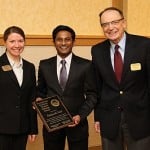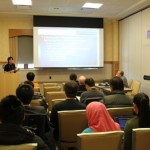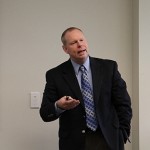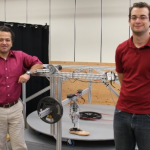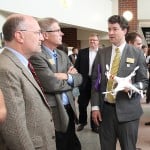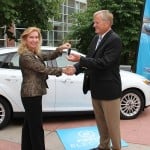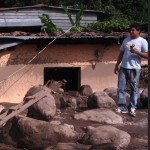 Article by Erika Vichcales, student writer, from Tech Today, Updated March 28, 2014
Article by Erika Vichcales, student writer, from Tech Today, Updated March 28, 2014
In recognition of World Water Day, Michigan Tech sponsored a variety of events through March 27. This year’s international event focuses on water and energy and the connections between them.
World Water Day was started by the United Nations to raise awareness about the problems surrounding water on our planet. The world is more than 70 percent covered in water, yet less than 1 percent is available for people to use.
